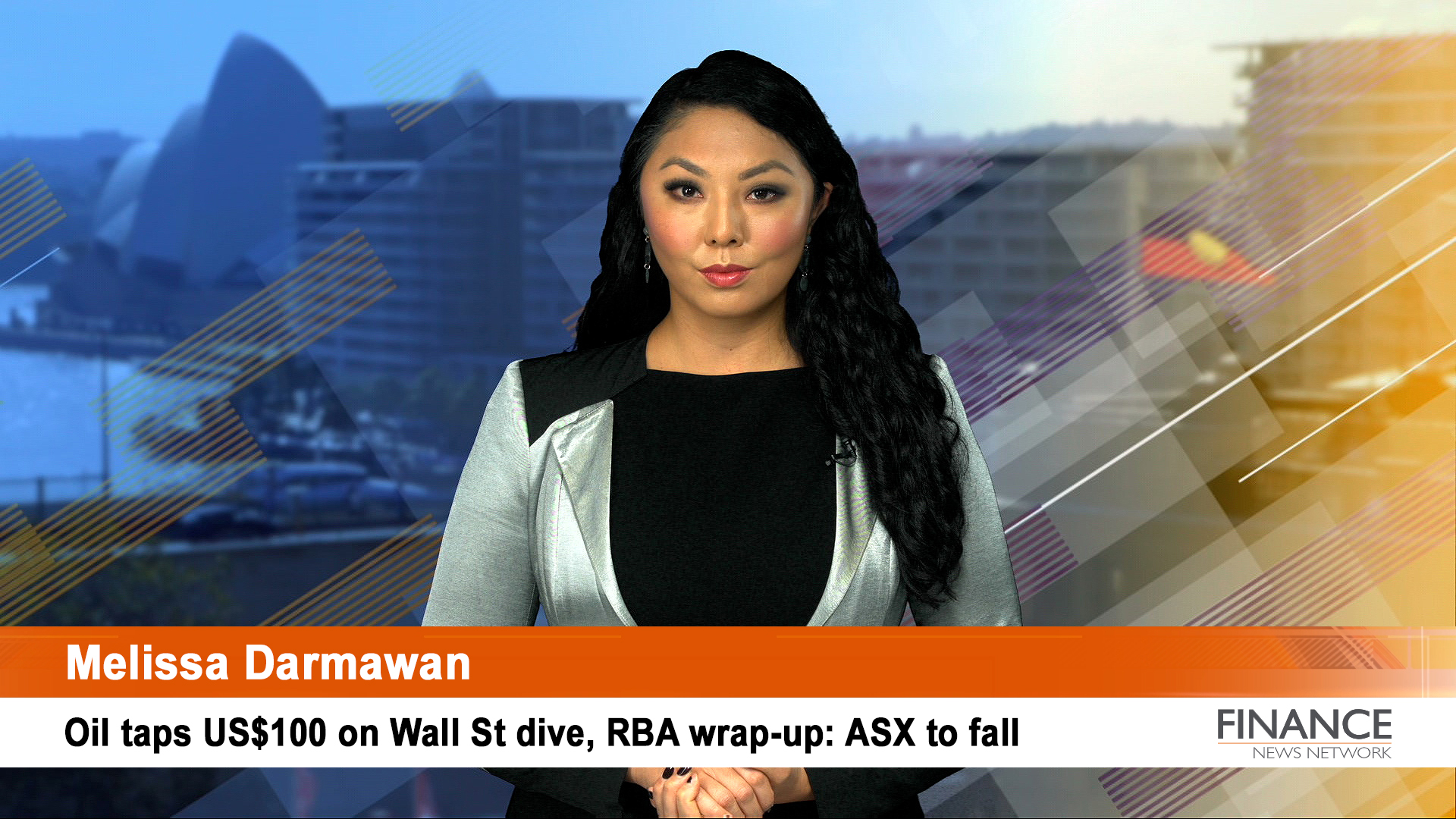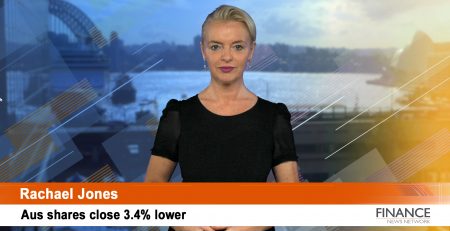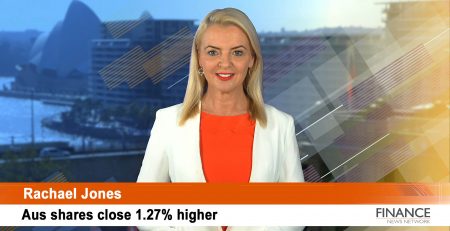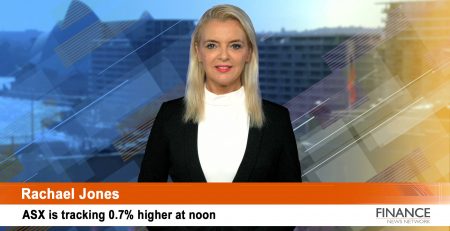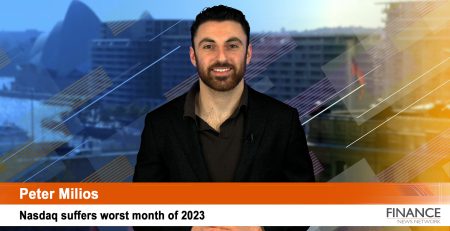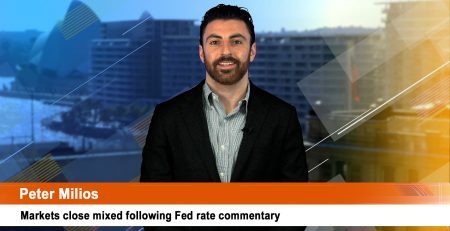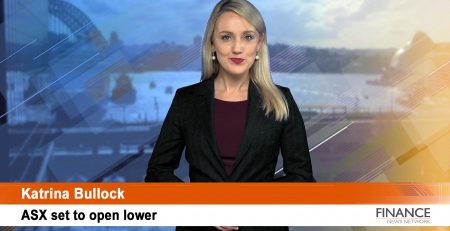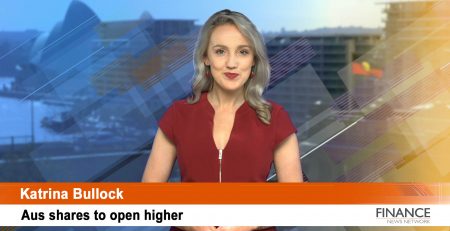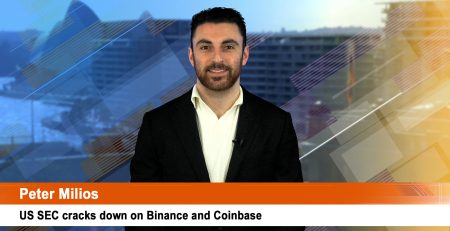Oil taps US$100 on Wall St dive, RBA wrap-up: ASX to fall
Investors flee equities to safe havens like bonds and commodities. Oil prices tapped above US$100 amid reports of a 64km long convoy of Russian military vehicles heading towards Kyiv, triggering concerns of a massive strike on the population centre. RBA statement review. ASX wrap up.
Good morning. Volatility persists as we continue to March. I’m Melissa Darmawan for Finance News. This is your market outlook.
The Australian sharemarket is set to dip as the crisis continues.
US stocks push lower as bonds rally
Wall St pushed lower and bonds rallied, yields lower as investors kept a close eye on escalating tension in eastern Europe. Oil is in the spotlight even after US and other major economies plan to release emergency stockpiles. The move exacerbated concerns, supercharging the price of crude to seven year highs. Financial stocks, like banks, got hit on concerns of margin pressure amid self-sanctioning to cut Russia exposure, while wheat prices soared. Traders are abandoning bets of a 50 points rate rise this month by the Fed amid this.
Oil soars as IEA taps reserves
The International Energy Agency agreed to release 60 million barrels of oil from the global supply. Officials said that the situation with Russia does put "global energy security under threat, putting the world economy at risk during a fragile stage of the recovery”. Meanwhile, countries around the world expanded their sanctions on Russia, while Saudi Arabia is standing by its agreement with Russia, and OPEC to boost production to help with global supply. OPEC+ will meet today.
Prices on the rise sparked growing concerns about the global supply of wheat. Russia is the biggest exporter of wheat, and Ukraine is one of the top exporters, so there’s a ripple effect on the global economy with imminent hikes on the price of bread.
Central bankers face a challenging environment
The situation poses a very interesting scenario around inflation. Around the world, inflation is sitting at multi-year highs, confidence at decade lows as consumers watch their money buy less. So this poses an issue for central banks, I’ll touch on the RBA shortly.
The reason being is that with high inflation rising amid this geo-political situation, there could be a slowdown in economic growth, so stagflation, with employment also having a role in this though the definition of stagflation appears to be different with market participants at the moment.
Central banks can control the demand side of the supply-demand equation. Even as demand slows down just a bit, many of the reasons supplies are being hit are due to matters outside the control of monetary authorities. This is where you need fiscal authorities, the government to come in. However, their support takes time. Government spending on infrastructure takes years to build, so rail lines, roads, this can’t be built in a day.
So what this means is that we may need to get used to inflation running hot for some time in the coming months before it stabilises. However, from a year from now inflation is set to be lower, and if you look at economists' forecasts, this is what they see, economists see inflation abate.
RBA wrap-up
Yesterday, the RBA maintained its cash rate at a record low of 0.10 per cent. In their statement, governor Philip Lowe said that the war in Ukraine was “a major new source of uncertainty” on an improving global economy. Dr Lowe warned that inflation would continue to rise, forecasting it to hit 3.25 per cent in the coming quarters. This is a very important point, the central bank expects inflation to spill over its 2 to 3 per cent target range.
If we reflect back on the past year, Dr Lowe has continued to play the same tune that interest rate lift-off would not occur until inflation was “sustainably” within its target. What does this mean? It means that the central bank has given itself some breathing space, it appears that they are going to let the economy run hot and wait for the inflation figure to remain above 3 per cent. From there, it looks like a decision can be made as to what the definition of “sustainable” really means. This move reiterates the central bank’s stance on being “patient" before raising interest rates.
The question does lie, when is the next interest rate hike? We saw banking giants factor in rate hikes which saw mortgage rates move higher recently. Some economists were pricing in a rate hike as early as June, however with the escalating situation in eastern Europe, the disruption is set to ripple around the globe and put a handbrake on central banks’ plans to tighten monetary policy. This could be the reason that central bankers hold off on raising rates amid an economic slowdown. Nevertheless, the situation is volatile and if Russia moved on Ukraine in this manner, mounting sanctions could elicit a more aggressive approach from the Kremlin, and in turn see risk sentiment flutter.
ASX best & worst on Tuesday
Yesterday, the local sharemarket saw PointsBet Holdings (ASX:PBH) as the best performer amid speculation on the future of its US based business, closing 17.5 per cent higher at $4.17. It was followed by shares in Paladin Energy (ASX:PDN) and Block (ASX:SQ2).
According to a note from Credit Suisse, higher costs saw Sandfire Resources’ (ASX:SFR) earnings miss their expectations by 16 per cent. They were the worst performer, closing 11.6 per cent lower at $5.92. It was followed by shares in Perseus Mining (ASX:PRU) and Zip Co (ASX:Z1P).
Risk-off it seems except energy
It appears that traders are taking the short term view and avoiding long positions, selling down on all things risk except for energy stocks. We are seeing companies self-sanction by cutting their Russian exposure. Angst is mounting on concerns of an economic slowdown if the crisis in Ukraine prolongs. Stagflation talks are now on the table, supercharging the price of commodities from oil, wheat, gas, and palladium.
Figures around the globe
At the closing bell, the Dow Jones lost 1.8 per cent to 33,295, the S&P 500 fell 1.6 per cent to 4,306 while the Nasdaq dropped 1.6 per cent to 13,532.
Across the S&P 500 sectors, energy was the only winner up 1 per cent. Sell-down across the board with financials as the worst performer, the treasury yield fell, not helping with margins. The 10-year fell by 11 points to near 1.73% as prices rose, gold jumped on a stronger greenback as traders piled into safe havens. The Japanese Yen, beta currency, also rallied against the greenback.
Across the Atlantic, European markets closed lower. Paris lost 3.9 per cent, Frankfurt also dropped 3.9 per cent and London’s FTSE fell 1.7 per cent. On the London Stock Exchange, Rio gained 2.2 per cent, BP fell 1.8 per cent and Shell fell 1.1 per cent as these companies look to cut their exposure to Russia.
Asian markets closed higher amid the figures released from February’s purchasing manager index. Investors digested that the world’s second largest economy, China saw its factory activity pick up in the period. Tokyo’s Nikkei gained 1.2 per cent despite its local production activity slowing down, Hong Kong’s Hang Seng rose 0.2 per cent amid mixed government messages on Covid-19 lockdowns while China’s Shanghai Composite added 0.8 per cent.
Yesterday, the Australian sharemarket closed 0.7 per cent higher at 7,097 for its third straight day, lifted up by technology, offsetting losses in utilities, materials, consumer staples and property.
SPI futures
Taking all of this into the equation, the SPI futures are pointing to a 0.7 per cent fall.
Local economic news
The nation’s GDP figures for the December quarter are due today from the Australian Bureau of Statistics.
What to expect today around these figures is a 3 per cent bounce, following the Delta lockdowns which drove a 1.9 per cent contraction in the September quarter, driven by pent up consumer spending.
Ex-dividend
There are number of companies going ex-dividend today.
Adacel Technologies (ASX:ADA) is paying 2.75 cents unfranked
Australian Ethical (ASX:AEF) is paying 3 cents fully franked
Ashley Services Group (ASX:ASH) is paying 3 cents fully franked
Bell Financial Group (ASX:BFG) is paying 6.5 cents fully franked
Bravura Solution (ASX:BVS) is paying 3.7 cents unfranked
Centrepoint Alliance (ASX:CAF) is paying 0.5 cents fully franked
CPT Global (ASX:CGO) is paying 1.5 cents fully franked
GQG Partners (ASX:GQG) is paying 1.4976 cents unfranked
Link Administration Holdings (ASX:LNK) is paying 3 cents fully franked
Mayfield Childcare (ASX:MFD) is paying 2 cents fully franked
Ooh!Media (ASX:OML) is paying 1 cents fully franked
Pengana Capital (ASX:PCG) is paying 12 cents fully franked
Platinum Asset (ASX:PTM) is paying 10 cents fully franked
Qantm Intellectual (ASX:QIP) is paying 3 cents fully franked
Resimac Group (ASX:RMC) is paying 4 cents fully franked
Symbio Holdings (ASX:SYM) is paying 3.3 cents fully franked
Teaminvest Private (ASX:TIP) is paying 0.25 cents fully franked
Telstra Corporation (ASX:TLS) is paying 8 cents fully franked
Treasury Wine Estate (ASX:TWE) is paying 15 cents fully franked
IPOs
There are two companies set to list on the ASX today with 5E Advanced Materials Inc (ASX:5EA) and Omnia Metals Group (ASX:OM1) slated.
Commodities
Iron ore has gained 3.8 per cent to US$144.45 due to improving factory activity data in China. Its futures point to a 3.3 per cent gain.
Gold has gained $47.30 or 2.5 per cent to US$1948 an ounce. Silver is up $1.21 or almost 5 per cent to US$25.58 an ounce.
Oil has added $9.23 or 9.6 per cent to US$104.95 a barrel.
Currencies
One Australian Dollar at 8:00 AM has weakened from yesterday, buying 72.49 US cents (Mon: 72.60 US cents), 54.45 Pence Sterling, 83.28 Yen and 65.19 Euro cents.
Copyright 2022 – Finance News Network
Source: Finance News Network

